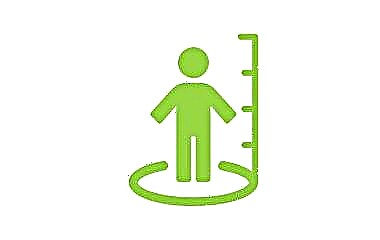
Unknown abbreviations in the blood test of children are alarming for many parents, especially if their values are higher than normal or underestimated. One of these designations is WBC. What is hidden behind these letters, why is this analysis needed and how to decipher its result?

What it is
WBC analysis is the definition of white blood cells in a child's blood. This abbreviation implies the decoding "white blood cell count", which means "the number of white blood cells." The WBC indicator is calculated as part of a general blood test. It is needed to determine the total number of leukocytes and detect an increase / decrease in their number.
Thanks to the WBC analysis, the doctor finds out the state of the child's immunity, which will help him in making a diagnosis or monitoring treatment.

Rate and deviations
Leukocytes are very important blood cells involved in immune responses and protecting the baby from any negative influences. They form in the bone marrow and some other organs, and then enter the bloodstream and travel through the child's body. It is these cells that protect children from bacteria, viruses, toxins and many other influences. Therefore, a sufficient amount of them is important for maintaining the health of babies, and any changes in the number of white blood cells can be a sign of illness.

Leukocytes are normal - decoding in the table
To understand whether the child's immunity is in order and whether the baby has any dangerous diseases, you should know what WBC is considered normal. For children of different ages, it will be like this:
In the first days after childbirth, the number of white bodies can increase to 30 x 109/ l, which is also considered normal, but by the fifth day of life, the number of leukocytes decreases and does not exceed 15 x 109/ l.

Increased rate
If the indicator is increased in the WBC analysis, it is called leukocytosis... It is normal and may indicate recent physical exertion, overheating of the child or hypothermia before the test, psychoemotional stress on the eve of the test.
Also, leukocytosis is normal within a few hours after a meal, so you should always take a blood sample for WBC on an empty stomach.

An increase in WBC is characteristic of such pathological processes:
- Bacterial infections.
- Acute surgical diseases.
- Chronic inflammatory processes.
- Viral infections.
- Allergic reaction.
- Fungal infection.
- Parasitic diseases.
- Autoimmune processes.
- Neoplasms.
- Severe bleeding or hemolytic anemia.
- Extensive burns.
- Injury.
- Removing the spleen.
- Leukemia.
Also, WBC may rise due to the intake of certain medications, for example, hormonal drugs.
We recommend watching a video in which the famous doctor Komarovsky answers questions about high leukocytes:
Below normal
With a decrease in WBC, the child is diagnosed with leukopenia. It occurs if a child has:
- Depletion or hypovitaminosis.
- Poisoning.
- Bacterial infection.
- A viral disease in the recovery stage.
- The bone marrow is affected by chemicals, radiation, an autoimmune process, a tumor.
- Reduced blood pressure.
- Anaphylactic shock.
- Systemic disease.
- Diabetes mellitus or hypothyroidism.
- The function of the spleen is increased.
- Tumor.
Also, a decrease in WBC is possible after treatment with certain medications, for example, cytostatics, anticonvulsants, or antibiotics.

Leukocyte formula
Simultaneously with the calculation of the number of all leukocytes in the blood test of children, their different types are also deciphered, presenting their number as a percentage of the total number of white blood cells.
The most numerous among all leukocytes are neutrophils. Such cells are designed to protect the child's body mainly from bacterial infections, so their increase usually indicates infection with bacteria or active inflammation. A decrease in neutrophils is dangerous for a child due to the lack of protection against bacteria. If the analysis determines the lack of these cells, the child runs the risk of "catching" the disease, so neutropenia cannot be ignored.

In a slightly smaller amount in the blood are presented lymphocytes, protecting children mainly from viruses. Their increase in the leukogram is most often found in viral infections. These cells destroy viruses and produce antibodies. They are very important for the immune system, therefore, lymphopenia requires special attention from the doctor.

Only a few percent of all leukocytes are eosinophils. The main function of these cells is to protect the body of children from allergens, as well as from parasitic diseases. That is why, with an increase in their percentage, the doctor first of all examines the child for worms, and also assesses his allergic history. Reduced eosinophils are found in poisoning and severe infections.

A small group of leukocytes are monocytes. These cells protect the child's body not only from infectious agents, but also cleanse it of damaged cells and dead tissue. Their increased number is observed in infections, tumors and other pathologies, and a decrease in monocytes in the blood is characteristic of serious bone marrow lesions.

Another group of leukocytes, determined in the peripheral blood in a small percentage, is represented by basophils. These cells are involved in allergic reactions, therefore, their high percentage often indicates an allergy, but it also occurs in some other pathologies.

What to do if your WBC indicator changes
If the WBC indicator in the child's blood test deviates from the norm, it is necessary to retake the blood, not forgetting the influence of factors that can give an unreliable result (food intake, overheating, physical activity, stress, etc.). If changes are also present in the re-analysis, this is a reason for contacting a pediatrician to examine the baby more carefully.
When leukocytosis is detected, the doctor will first of all look for an infectious or inflammatory process in the child's body. Only by rejecting these two most common reasons for an increase in the WBC analysis, you can look for other factors that affect the number of leukocytes.
As soon as the doctor makes a diagnosis and prescribes the necessary treatment for the child, as the baby's condition improves and he recovers, the level of white cells in the blood will also normalize.
When detecting leukopenia in a child, it is important to find out its cause as soon as possible, since a low number of white cells in the blood indicates a decrease in defenses and a high risk of infection. After determining the cause of the lowered leukocytes, treatment should be started immediately, during which the WBC will return to normal.
We recommend watching the video prepared by the Union of Pediatricians of Russia on clinical blood analysis:



